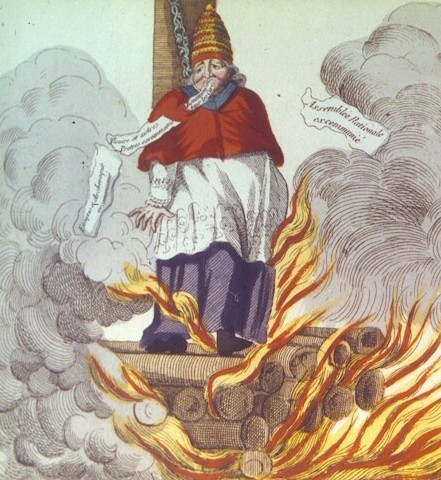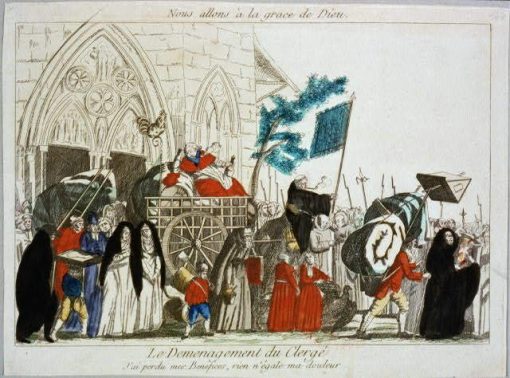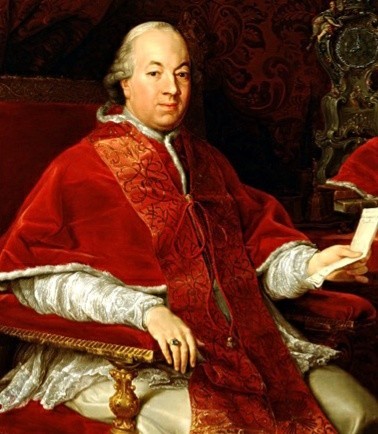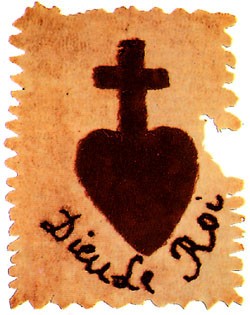
In July 1790 the National Constituent Assembly passed the Civil Constitution of the Clergy. Its aim was to reorganise and regulate the Catholic church in France; to eliminate corruption and abuses in the church; and to limit the church’s political influence. The Civil Constitution reduced the number of bishops and archbishops, made the clergy paid employees of the government and required all members of the clergy to swear an oath of loyalty to the nation. It became one of new regime’s most controversial and divisive policies, generating more dissent and fuelling more opposition than any other revolutionary policy. According to 19th-century historian Thomas Carlyle, the Civil Constitution was “but an agreement to disagree. It divided France from end to end with a new split, infinitely complicating all the other splits.”
Criticisms of the Church
The relationship between Enlightenment figures, the French Revolution and the Catholic church was always problematic.
The late 18th century had thrummed with criticism of organised religion and the First Estate. Writers like Voltaire condemned the church’s excessive wealth and land ownership, its undue political influence, its endemic corruption and venality, and the debauched conduct of some clergymen.
Several critics of the Catholic church were clergymen themselves, men like Emmanuel Sieyes, Charles de Talleyrand and Henri Grégoire. At the Estates General in 1789, many of these dissenting clerics crossed the floor, sided with the Third Estate and joined the National Assembly.
Criticisms of clerical behaviour and calls for church reform did not always mean opposition to the church, however, nor did it suggest atheism or a lack of faith. The vast majority of revolutionaries retained Christian religious beliefs and maintained support for the church. What they wanted was a church free of corruption, free of foreign control and accountable to both the nation and its people.
The Assembly takes action

Action against the church began in the first weeks of the National Constituent Assembly. The August 4th session that dismantled seigneurialism in France also stripped the church of its rights as a feudal landowner. Shortly after, the Assembly formed an Ecclesiastical Committee, comprised of revolutionary priests and lawyers, to provide advice on religious and clerical policies.
By late 1789, there was a consensus in the Assembly that the church should surrender much of its wealth, in order to help alleviate the national debt. In return, the national government would assume responsibility for clerical salaries and relieve the church of its responsibilities for education and poor relief.
In September 1789, the National Constituent Assembly abolished the taxation privileges of the First and Second Estates. Two months later, the Assembly nationalised all church-owned lands. Property seized from the church was deemed biens nationaux or ‘national goods’; the auctioning of this property began in late 1790. Revenue from the sale of church lands was used to underwrite newly issued paper bonds called assignats.
In February 1790, the Assembly ruled that monastic vows were no longer legally binding. The following month it reduced the number of dioceses from 130 to 83, aligning them with the newly formed départements. On April 14th 1790, deputies voted to abolish the tithe, effective from January 1st the following year.
Creating a ‘state church’

These reforms were followed by the Civil Constitution of the Clergy, passed by the National Constituent Assembly on July 12th 1790. It was the most radical change of the revolution to that point, and aimed to transform the Catholic church in France into a de facto state church.
The Civil Constitution reorganised and standardised parish sizes on the basis of both geography and population. The salaries of parish priests were to be fixed by and paid for by the state. These salaries ranged from 1,200 to 6,000 livres per year, depending on the location and the nature of clerical duties. For most parish priests, this represented an increase in their pre-1789 salaries. The salaries of bishops, in contrast, were significantly reduced to around 12,000 livres per annum.
Bishops were also required to live permanently within their diocese (in pre-revolutionary France there had been many absentee bishops and archbishops, men who preferred the liveliness of Paris or other locations to their own diocese). Bishops and priests would be elected by a local or regional assembly, not appointed by the Vatican. More controversially, the electors in clerical elections did not have to be Catholic.
The clerical oath
If these changes were not divisive and disruptive enough, the Civil Constitution of the Clergy also required bishops to swear an oath of loyalty.
A clerical oath was not itself a radical departure from existing customs. Since the reign of Louis XIV, newly consecrated bishops were required to attend services at Versailles and swear an oath of loyalty to the king. Under the terms of the Civil Constitution, however, each bishop was required to swear “loyalty to the nation, the law and the king” and “to support with all his power the constitution decreed by the National [Constituent] Assembly”.
In November 1790, the Assembly issued a decree that extended this compulsory oath to all members of the clergy. Parish priests, abbés, curates, monks and nuns were also required to swear loyalty to the nation. If lower clerics were to be paid by the state, it was argued, then it was reasonable that they swear an oath of loyalty to the state, in a similar fashion to the oaths taken by public officials.
Opposition to oath-swearing
Forcing clerics to swear loyalty to the nation created a crisis of conscience. A clergyman’s oath to the state, it was argued, might conflict with his oath of loyalty to God and his obedience to the Pope.
Within the clergy, opposition to the oath was strong. In October 1790, several clerical deputies in the National Constituent Assembly declared they would boycott and defy the Assembly’s policies on religion until they had received instructions from the Pope. There should be no reforms to the church, they argued, that were not based on consultation with the church.
The majority of higher clergymen later refused to swear the oath. The ordinary clergy, however, were more divided. When the process began in January 1791, the oath was taken by around 60 percent of parish priests (perhaps unsurprising, given the promise of higher state-funded salaries). Those who submitted and took the oath became known as ‘juring priests’ or the ‘constitutional clergy’. Those who refused the oath were dubbed ‘non-juring’ or ‘refractory priests’. These dissenting priests were later removed from their posts, by order of the Assembly.
The Pope responds

The situation evolved further on March 10th 1791 when the Vatican responded. A former aristocrat himself, Pope Pius VI was naturally hostile to the revolution in France. In closed-door meetings with his cardinals, Pius condemned the revolution in strong terms, particularly the August 4th decrees that annulled the church’s feudal rights and the Declaration of the Rights of Man and Citizen, which he considered heretical.
Publicly, however, the Pope said nothing until March 1791, when he issued a scathing condemnation of the Civil Constitution. A month later (April 13th) Pius released “Charitas“, an encyclical responding to “the war against the Catholic religion started by the revolutionary thinkers who form a majority in the National Assembly of France”.
In this encyclical, the Pope condemned the Civil Constitution of the Clergy and claimed that Louis XVI had only signed it under duress. Pius also declared that constitutional bishops and priests would be suspended from office unless they renounced the oath.
Division in the priesthood

Back in France, the pope’s open condemnation of the Civil Constitution hardened opposition among the local clergy. Many clerics who had equivocated about taking the oath now refused to do so. Some who had already taken the oath renounced it, in line with the pope’s orders.
By the spring of 1791, the Catholic church in France was divided between clerics willing to swear loyalty to the nation and those who remained loyal to Rome.
Across the nation, hundreds of non-juring priests defied the national government by remaining in their parishes, fulfilling their duties and celebrating mass. These refractory priests often enjoyed the support of their parishioners, who objected to a secular government interfering in spiritual matters. Non-juring prelates and parish priests were particularly common in Flanders, Alsace, Brittany, the Vendée and the city of Lyon. Unwilling and unable to force the issue, the National Constituent Assembly compromised and issued a ‘tolerance decree’ on May 7th.
“With the Civil Constitution of the Clergy, the Revolution and the Church were set on a collision course. Religion and revolution, in the words of the historian Jules Michelet, became increasingly incompatible, and matters religious became implicitly political. As a result of the debacle over the oath, the Catholic church came to be associated with counter-revolution, reaction and France’s pre-revolutionary past, which the Revolution wished to eradicate.”
Caroline C. Ford, historian
A source of counter-revolution
At this point, revolutionary France had two separate Catholic churches. The Civil Constitution of the Clergy attempted to align the church with the revolution and to create a national religion. Instead, it instigated a schism within the French church and created a new source of counter-revolutionary sentiment.
The Civil Constitution alienated thousands of deeply religious French citizens; it pressured the Pope into condemning the revolution; and it gave reactionaries fresh grounds to attack the National Constituent Assembly.
Louis XVI, a devoutly religious man, was also deeply affected by the Civil Constitution. The king had tolerated the revolution’s political reforms and the erosion of his own power – but he could not endorse attacks on the church. In Louis’ mind, he would not jeopardise his immortal soul by accepting communion from a constitutional priest. The Assembly’s attempt to milk and then harness the Catholic church to force its loyalty to the nation backfired, fuelling opposition and making the new regime even more difficult to govern.

1. The Civil Constitution of the Clergy was an attempt to reform and regulate the Catholic church in France. It was passed by the National Constituent Assembly on July 12th 1790.
2. It followed other measures taken by the Assembly against the church, including the abolition of feudal dues, the confiscation and sale of church lands and the suppression of tithes.
3. The Civil Constitution allowed the state to assume control of some aspects of religion, including funding of clerical salaries and the responsibility for education and charitable works.
4. It also required bishops and then all clergy to swear an oath of loyalty to the state, to be taken in January 1791. Most bishops did not take this oath, though around 60 percent of lower clergy did.
5. In April 1791 Pope Pius VI issued an encyclical condemning the Civil Constitution and threatening to suspend all clergy who took the oath. The Civil Constitution became a significant cause of division and disruption in the new society.

The Civil Constitution of the Clergy (1790)
A Paris newspaper on the Civil Constitution of the Clergy (1790)
The National Constituent Assembly’s decree on the clerical oath (1790)
A non-juring priest explains his decision not to take the oath (1791)
“Charitas”: Pope Pius VI responds to the Civil Constitution (1791)
The Legislative Assembly threatens to deport non-juring clergy (1792)
Citation information
Title: ‘The Civil Constitution of the Clergy’‘
Authors: Jennifer Llewellyn, Steve Thompson
Publisher: Alpha History
URL: https://alphahistory.com/frenchrevolution/civil-constitution-of-the-clergy/
Date published: October 9, 2019
Date updated: November 9, 2023
Date accessed: April 23, 2024
Copyright: The content on this page is © Alpha History. It may not be republished without our express permission. For more information on usage, please refer to our Terms of Use.
